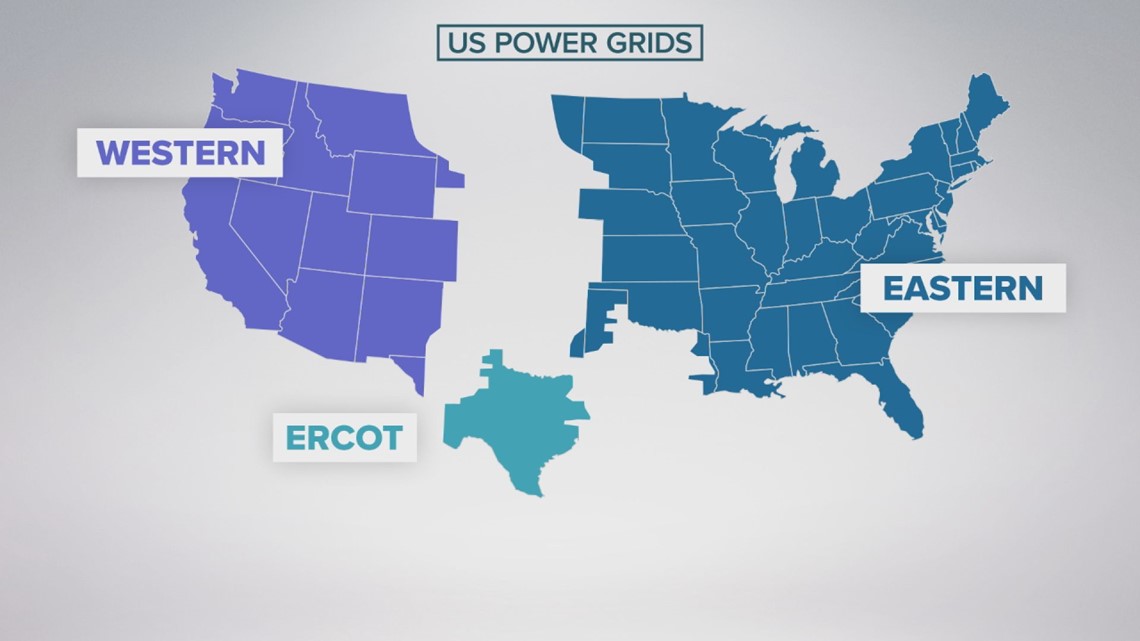
Everything’s bigger in Texas, from the vast landscapes to the electric power challenges. As the Lone Star state has encountered an increase in brownouts and power outages, many homeowners are seeking answers. This guide aims to shed light on these issues, offering Texans a glimpse into the causes and solutions.

Diving Deeper into Brownouts and Power Outages
Brownouts Explained:
- Defining Brownouts:While casually referred to as a “dimming of lights,” a brownout in the electrical context is a drop in voltage in an electrical power supply system. It doesn’t signify a complete loss of power but a reduction, which can last for a few minutes to several hours.
- Causes of Brownouts:Brownouts often arise from the intentional or unintentional actions of power companies. They may be deliberate, serving as a preventive measure when the power demand outpaces supply, ensuring that a complete blackout is avoided. Other times, they’re unintentional, stemming from equipment malfunctions or unexpected surges in electricity demand.
- The Effects on Home Appliances:While brownouts are less severe than blackouts, their implications can be subtly damaging. Household appliances and electronics are designed to operate at specific voltages. When these devices receive less power than required, they may work inefficiently, overheat, or even sustain damage. Over time, repeated brownouts can reduce the lifespan of these devices.

The Anatomy of a Power Outage:
- What is a Power Outage? A power outage, colloquially known as a blackout, is a total loss of electric power in a particular area. It can be momentary, lasting a few seconds, or extended, spanning days or even weeks.
- Root Causes of Blackouts:
- Infrastructure Failures: Aging infrastructures, equipment malfunctions, or the failure of transmission lines can disrupt power supply.
- Natural Disasters: Hurricanes, floods, tornadoes, or severe storms can damage power lines and substations, leading to outages.
- Human Errors: Mistakes during equipment maintenance or installation, and even vehicular accidents impacting power lines or grids, can trigger blackouts.
- High Power Demand: When the demand for electricity surpasses the supply capacity, it can strain the grid to a breaking point.
- The Ripple Effects: Beyond the obvious inconvenience, blackouts impact daily life on multiple fronts. Traffic lights go dark leading to congested roads, businesses are halted, and homes turn into impenetrable fortresses at night. Prolonged outages also pose health risks, especially in temperature extremes, and can lead to economic losses.
The understanding of brownouts and blackouts helps us appreciate the critical role of consistent power supply and the importance of preparedness in mitigating the impact of such events.
The Complexity of Texas’s Electrical Issues
A deep dive into these complexities underscores the immense challenges Texas grapples with, but also highlights the avenues for change and improvement.

The Independent Texas Grid (ERCOT):
-
- A Unique Setup: Texas, unlike most other states, predominantly operates on its independent power grid. The Electric Reliability Council of Texas (ERCOT) manages around 90% of the state’s electrical load, a feat not seen elsewhere.
- Pros & Cons of Independence: Being self-reliant means Texas doesn’t generally suffer from out-of-state power failures. However, this isolation also means it cannot readily tap into neighboring grids when faced with a deficit. This independence, while a source of pride, can amplify localized challenges.
- Pressure Points: While ERCOT has the capacity to generate vast amounts of power, unexpected surges in demand or generation hiccups can strain the system, leading to forced brownouts or blackouts as safety measures.

Mother Nature’s Wrath:
- Climate Extremes: Texas is a land of climatic dichotomies. From freezing winter storms that paralyze power plants to scorching summer days that overload the grid, the state grapples with both ends of the meteorological spectrum.
- Resilience vs. Reality: Though the Texan grid is designed for resilience, rare weather events – like the February 2021 freeze – expose vulnerabilities, challenging its preparedness and response mechanisms.
Skyrocketing Demand:
- The Urban Boom: As metropolitan areas like Austin, Houston, and Dallas see explosive growth, the sheer number of consumers and businesses connecting to the grid multiplies.
- Gadget-Driven Homes: The modern Texan home isn’t just about lighting and heating anymore. From smart refrigerators to advanced HVAC systems, the technological footprint and thus the power demand, have surged.
- Balancing Act: Catering to this increasing demand requires not just expanded infrastructure, but also strategic power management, load balancing, and timely capacity upgrades.

Grid Maintenance & Upgrades:
- The Aging Giant: A significant part of Texas’s power infrastructure harks back to earlier decades. These legacy systems, while robust for their time, now face wear, tear, and obsolescence.
- Proactive vs. Reactive Maintenance: Regular check-ups, preventive maintenance, and system upgrades can preempt many potential issues. Conversely, a reactive approach, addressing problems only after they manifest, magnifies risks and amplifies recovery times.
- Innovating for Tomorrow: Beyond mere maintenance, Texas needs forward-thinking innovation. Integrating renewable energy sources, enhancing storage capacities, and adopting smart grid technologies can be pivotal in future-proofing the state’s power landscape.

Bridging the Power Gap: From Grid Vulnerabilities to Home Resilience
- The Volatile Power Landscape: It’s undeniable that the very infrastructure meant to power our homes and cities in Texas has its own set of challenges. From the unique setup of ERCOT’s independent grid to the wrath of unpredictable weather phenomena, the state’s power scene is a landscape of peaks and valleys. Residents have become accustomed to the occasional dip in power or the unexpected blackout. But is ‘getting used to it’ the best we can do?
- The Need for Personal Power Solutions: As Texans, while we can’t individually restructure the power grid or control the weather, we can certainly fortify our homes. The idea isn’t about breaking away from the grid but complementing it. By recognizing the existing vulnerabilities in our power supply chain, the logical next step is to seek robust solutions that act as our personal power safeguard.
- Empowerment at Homefront: Enter the realm of whole home generators. As the broader power environment undergoes its flux, these generators stand as unwavering sentinels, ensuring that our homes remain unaffected, come what may. Before delving into their specifics, it’s vital to understand why, given the state’s particular challenges, they’re not just an accessory but a necessity for Texan homeowners.
The Value of Whole Home Generators for Texans
Texans, given their unique power challenges, can significantly benefit from the security and comfort that whole home generators, especially brands like Generac, bring to the table. Making the choice to invest in one isn’t just about withstanding the next blackout; it’s about fortifying the home against future uncertainties.

An Uninterrupted Power Lifeline:
- Beyond Backup – A True Contingency: Unlike smaller, portable generators, whole home generators can power the entire household. Their capacity ensures every room, every appliance, and every light source remains functional.
- Automatic Activation: One of the standout features of these generators is their automatic startup during power outages. Within seconds of detecting a power drop, they spring into action, minimizing disruption.
- Fuel Flexibility: Many modern whole home generators can operate on a variety of fuels, including natural gas, propane, or diesel, offering homeowners flexibility and reducing dependency on a single source.

Spotlight on Generac: Leading the Pack:
- Tailored Solutions for Diverse Needs: Generac isn’t a one-size-fits-all solution. With an array of models, homeowners can select a generator that matches their specific needs – whether it’s a modest home or a sprawling estate.
- Innovation & Reliability Converge: Generac’s continuous research and development ensure they remain at the forefront of generator technology. Features like remote monitoring allow homeowners to check the generator’s status, even from afar.
- Environmentally Conscious Choices: With models optimized for cleaner fuel burning, Generac ensures that homeowners aren’t just protecting their homes but also making an eco-friendly choice.

Protection Against Hidden Costs:
- Preserving Home Integrity: During prolonged outages, homes can suffer. Basements might flood without functional sump pumps, or pipes might burst in freezing conditions without heating. Generators act as a bulwark against such mishaps.
- The Silent Economical Guardian: The unspoken costs of power outages can be staggering. From replacing spoiled food to possible hotel stays during extended blackouts, the expenses mount up. Generators provide not just power but peace of mind, ensuring continuity and averting unforeseen costs.
- Safeguarding Long-Term Investments: For many, homes are their most significant investment. Protecting them goes beyond mere aesthetics. It’s about ensuring every system, every device, and every cherished possession is shielded from the vagaries of unpredictable power supply.

FAQs
- Why does Texas experience so many power outages compared to other states?
- Texas operates primarily on its independent power grid managed by ERCOT, which isn’t as interconnected with neighboring states. This unique setup, combined with extreme weather events and rapidly growing demand, can lead to more frequent outages.
- How can I prepare my home for unexpected power outages?
- Consider investing in a whole home generator. Keep emergency kits with flashlights, batteries, and essential supplies. Stay informed about weather predictions and enroll in local power outage notification systems.
- How does a whole home generator work during an outage?
- These generators detect power loss automatically and begin supplying power within seconds of an outage. When the grid’s power is restored, the generator will automatically switch your home back to grid power.
- Can a generator power my entire home or only select appliances?
- A whole home generator is designed to power your entire home, ensuring all appliances and systems function seamlessly during an outage. The capacity you need depends on your home’s size and power requirements.
Call the Professionals

In the vast expanse of Texas, where the unexpected is the norm, preparedness is the best defense. A whole home generator is more than an investment; it’s a commitment to safety, convenience, and resilience. Don’t let power outages leave you in the dark.
Ensure your home’s continuous power. Explore your options and schedule an appointment with Paschal Air, Plumbing & Electric to fortify your defense against the unpredictable.












